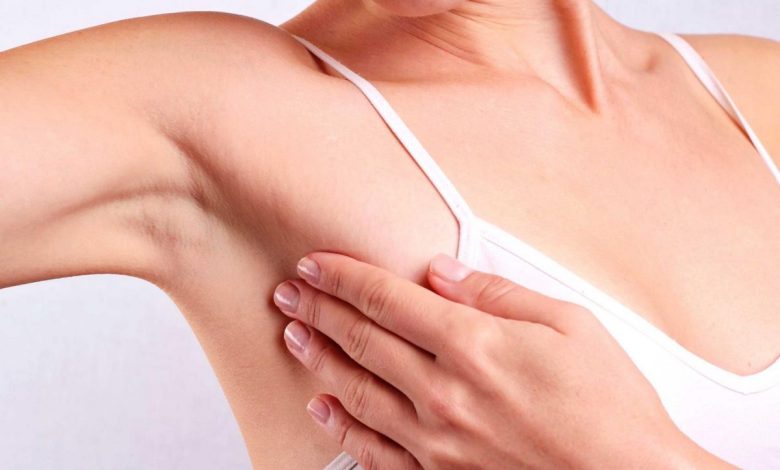Axillary lymphadenopathy: what is this, causes, symptoms, diagnostics, treatment, prevention

Armpit lump; Lump in the armpit; Localized lymphadenopathy – armpit; Axillary lymphadenopathy; Axillary lymph enlargement; Lymph nodes enlargement – axillary; Axillary abscess
Axillary lymphadenopathy is an enlargement of the lymph nodes in the armpit (armpits). Lymph nodes play a vital role in the body's immune system, as they help filter and fight infections and other foreign invaders. When these nodes swell and enlarge, it could be a sign of a serious illness.
Causes of axillary lymphadenopathy
There are many different causes of axillary lymphadenopathy., including infections, inflammatory conditions and some cancers. Some common reasons include:
- Bacterial infections: Staphylococcus aureus and streptococcus are common causes of axillary lymphadenopathy.
- Viral infections: Viral infections, like a cold, flu and mononucleosis, may also cause axillary lymphadenopathy.
- Inflammatory diseases: rheumatoid arthritis, sarcoidosis and lupus are examples of inflammatory conditions, which can cause axillary lymphadenopathy.
- Cancer: Lymphoma and breast cancer are two types of cancer., which can cause axillary lymphadenopathy.
Symptoms of axillary lymphadenopathy
The most common symptom of axillary lymphadenopathy is a swollen and tender lymph node in the armpit.. Other symptoms may include:
- Pain or discomfort in the affected area
- Warmth and redness in the affected area
- Fatigue
- Night sweats
- Weight loss
Diagnosis of axillary lymphadenopathy
To diagnose axillary lymphadenopathy, a doctor usually performs a physical examination, may also order additional tests.. These may include a blood test, chest x-ray or biopsy of the affected lymph node.
Treatment of axillary lymphadenopathy
Treatment for axillary lymphadenopathy will depend on the underlying cause.. Some common treatments include:
- Antibiotics: if the cause is a bacterial infection, antibiotics will be prescribed.
- Anti-inflammatory drugs: if the cause is an inflammatory condition, anti-inflammatory drugs may be prescribed.
- Chemotherapy or radiation therapy: if the cause is cancer, chemotherapy or radiation therapy may be recommended.
Home treatment for axillary lymphadenopathy
In addition to any prescribed treatment, there are several things, that can be made at home, to help manage symptoms of axillary lymphadenopathy. These may include:
- Recreation: it is important to get plenty of rest, to help the body recover.
- Application of heat: applying a warm compress to the affected area can help reduce pain and discomfort.
- OTC painkillers. OTC painkillers, Taki how ibuprofen, may help reduce pain and inflammation.
Prevention of axillary lymphadenopathy
It is not always possible to prevent axillary lymphadenopathy, but there are some things, which can be, to reduce the risk of developing this condition. These may include:
- Compliance with hygiene rules: washing your hands regularly and avoiding close contact with people who are sick can help reduce the risk of infection.
- Follow a healthy diet: diet, rich in fruits, vegetables and lean protein, may help support the immune system.
- Regular exercise: Regular physical activity may help improve overall health and reduce the risk of certain types of cancer..
In conclusion, axillary lymphadenopathy is a condition, which occurs, when the lymph nodes in the armpit swell and enlarge. There are many different causes of axillary lymphadenopathy., including infections, inflammatory conditions and some cancers. Symptoms may include swollen and tender lymph nodes, pain or discomfort in the affected area and fatigue. Treatment will depend on the underlying cause and may include antibiotics, anti-inflammatory drugs.
Used sources and literature
Miyake KK, Ikeda DM. Mammographic and ultrasound analysis of breast masses. In: Ikeda DM, Miyake KK, eds. Breast Imaging: The Requisites. 3rd ed. St Louis, MO: Elsevier; 2017:chap 4.
Tower RL, Camitta BM. Lymphadenopathy. In: Kliegman RM, St. Geme JW, Bloom NJ, Shah SS, Tasker RC, Wilson KM, eds. Nelson Textbook of Pediatrics. 21st ed. Philadelphia, PA: Elsevier;2020:chap 517.
Winter JN. Approach to the patient with lymphadenopathy and splenomegaly. In: Goldman L, Schafer AI, eds. Goldman-Cecil Medicine. 26th ed. Philadelphia, PA: Elsevier; 2020:chap 159.
